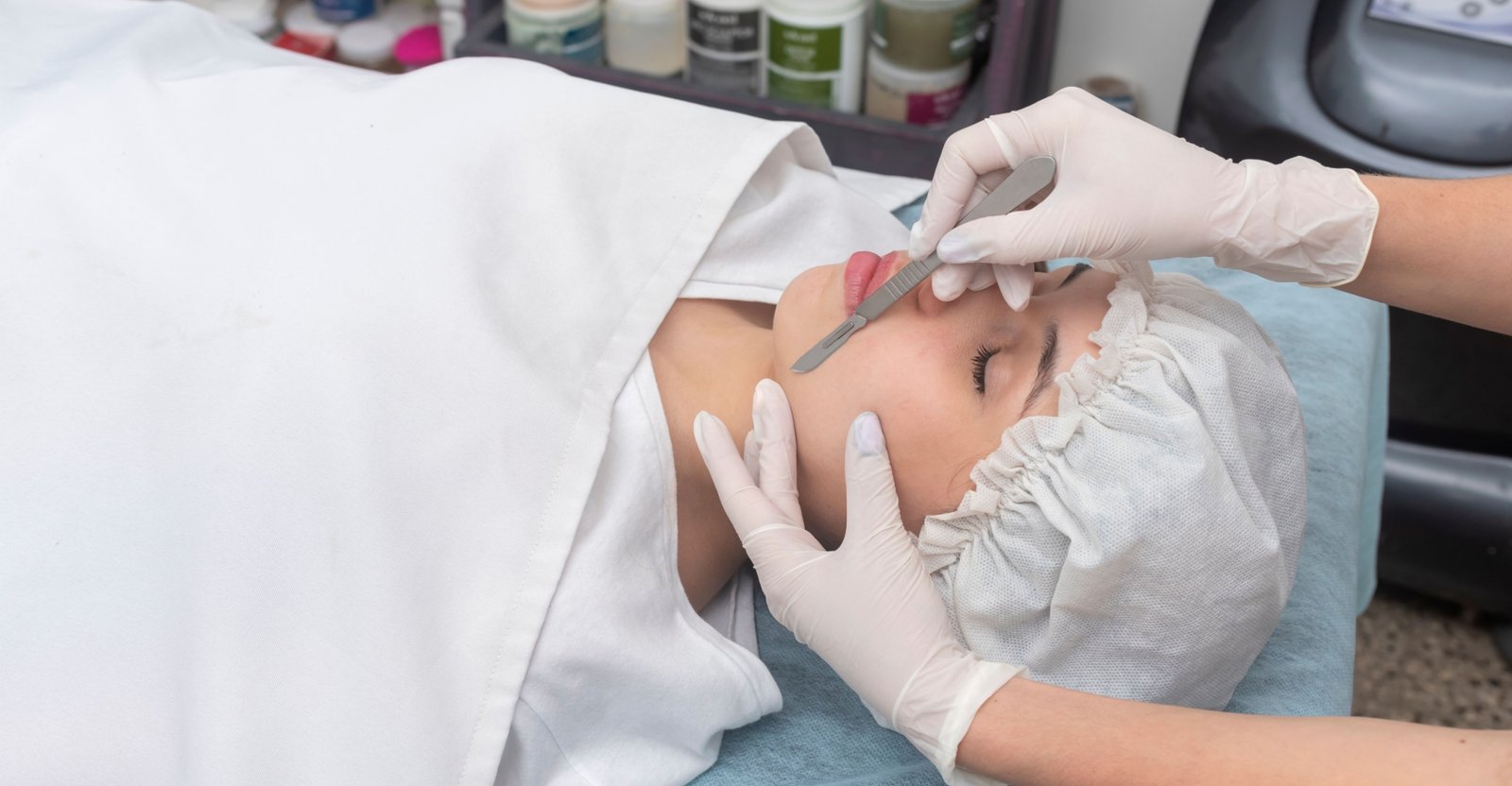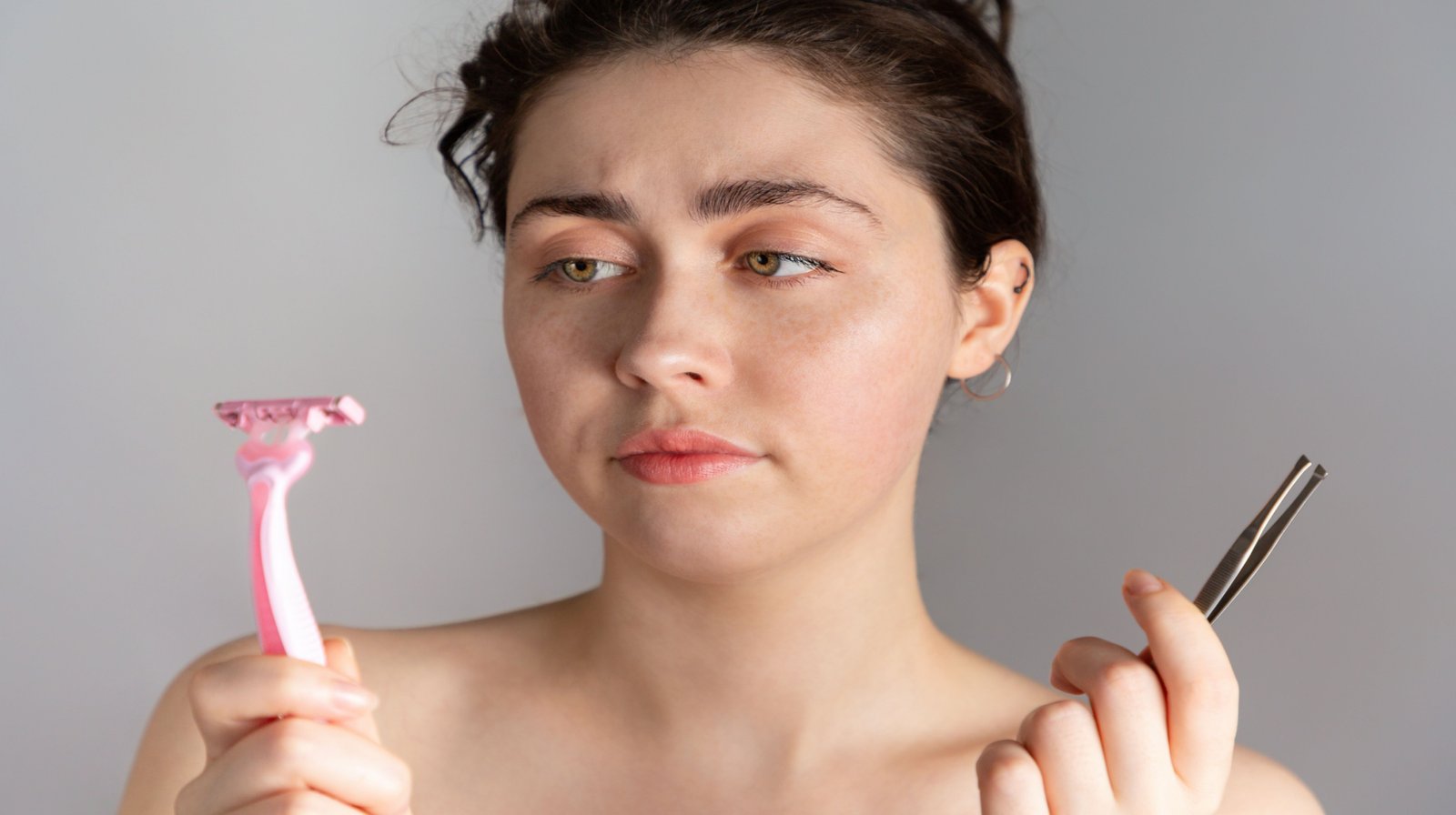No products in the cart.
Have you ever wondered what the difference is between dermaplaning and shaving? Both techniques involve removing hair from the face, but they are not the same. People often think they are interchangeable, but there are key differences in how they work, their benefits, and who should use them. So, which one should you choose: dermaplaning or shaving?
In this blog, we will break down the major differences between dermaplaning and shaving. We will explore what each method does for your skin, their pros and cons, and who can benefit the most from each technique. This will help you decide which one fits your skincare routine best.
What Is Dermaplaning?

Dermaplaning is a professional skincare treatment that involves using a medical-grade scalpel to gently scrape off the top layer of dead skin cells and fine facial hair, known as peach fuzz. This process leaves your skin feeling smooth and looking brighter. Therefore, dermaplaning is more than just hair removal; it is also an exfoliation treatment. As a result, your skin looks fresh, and products like serums and moisturisers can penetrate better, enhancing their effectiveness.
Moreover, this procedure is normally performed by a trained aesthetician or dermatologist, making it a specialised service. Thus, it is not something you can easily do at home without the proper tools or training. However, the results tend to last longer than traditional shaving, and there is no risk of cuts or razor burns.
What Is Shaving?
Shaving is a common method that most people use to remove hair. It involves using a razor to cut the hair at the skin’s surface. Unlike dermaplaning, shaving does not exfoliate the skin. However, it is a quick and convenient way to remove facial hair, and most people can do it at home with minimal effort.
While shaving may be quicker and easier, it does not remove dead skin cells as dermaplaning does. Therefore, the skin does not get the same smooth texture or glow. Moreover, regular shaving can lead to issues like ingrown hairs, razor burns, or cuts, especially if you have sensitive skin. Therefore, you must be careful when choosing the right razor and technique.
Key Differences Between Dermaplaning and Shaving
Both methods aim to remove hair, but they differ in several ways. Some of the following include:
- Tools Used: Dermaplaning uses a medical-grade scalpel, whereas shaving uses a standard razor. The process of dermaplane is typically done by a professional, while shaving can be done at home.
- Exfoliation: This procedure removes hair and exfoliates the skin by removing dead cells, giving your face a smooth and glowing appearance. Shaving does not offer the same level of exfoliation.
- Risks and Side Effects: Shaving can lead to cuts, ingrown hairs, and irritation, particularly if done too often or with a dull blade. Dermaplaning, when done by a professional, has fewer risks, although sensitive skin might react with some redness.
- Duration of Results: Because dermaplaning removes both hair and dead skin, the results last longer than shaving. You may only need to dermaplane once a month, whereas shaving might need to be done weekly.
Benefits of Dermaplaning vs Shaving
Dermaplaning and shaving have their benefits, depending on what you are looking for in a skincare routine. Here are some of them, including:
Benefits of Dermaplaning
- Exfoliation: As mentioned earlier, this procedure does more than remove hair. It also exfoliates the skin, leaving it softer and smoother.
- Better Absorption of Products: Skincare products like serums and moisturisers can penetrate the skin more effectively after this procedure.
- Smoother Makeup Application: Without the layer of dead skin and fine hair, makeup sits better on the skin, creating a flawless finish.
- Professional Care: This process is done by professionals, which reduces the risk of skin damage.
Benefits of Shaving
- Convenience: Shaving is a quick and easy process that you can do at home. No appointment is needed!
- Affordability: It is a more affordable option than dermaplaning. Because all you need is a razor.
- Instant Results: Shaving gives you immediate hair removal, which is perfect if you need a quick fix.
Dermaplaning vs Shaving: Which One Is Right for You?

Now that you know the differences, how do you choose between dermaplaning and shaving? It really depends on your skincare goals and your budget.
If You Want Exfoliation
If your main goal is to remove dead skin cells and improve the texture of your skin, dermaplaning is the better option. It offers exfoliation that shaving does not, making your skin look more radiant and allowing skincare products to work better.
Wanting a Quick Fix
Shaving is a good option if you are simply looking to remove facial hair quickly and with minimal fuss. It is easy to do at home and does not require a professional.
Having Sensitive Skin
If your skin is prone to irritation or razor burns, dermaplaning might be a gentler option. Because it is done by a professional, there is less risk of nicks and cuts.
Tight Budget
Shaving is far more affordable than dermaplaning. The sessions of dermaplane can be pricey, especially since professionals perform them.
Dermaplaning vs Shaving: Final Thoughts
Choosing between dermaplaning and shaving depends on your skincare goals, time, and budget. Dermaplaning offers deeper exfoliation and longer-lasting results, while shaving is quicker and more affordable. However, if you’re looking for more than just hair removal and want to improve your skin’s overall appearance, dermaplaning might be the better option.
Furthermore, if you’re interested in learning more about this effective procedure and perhaps even offering it as a professional service, consider enrolling in a Dermaplaning Training Course from the Open Learning Academy. This will train you with the skills and knowledge to perform the treatment effectively and safely.




